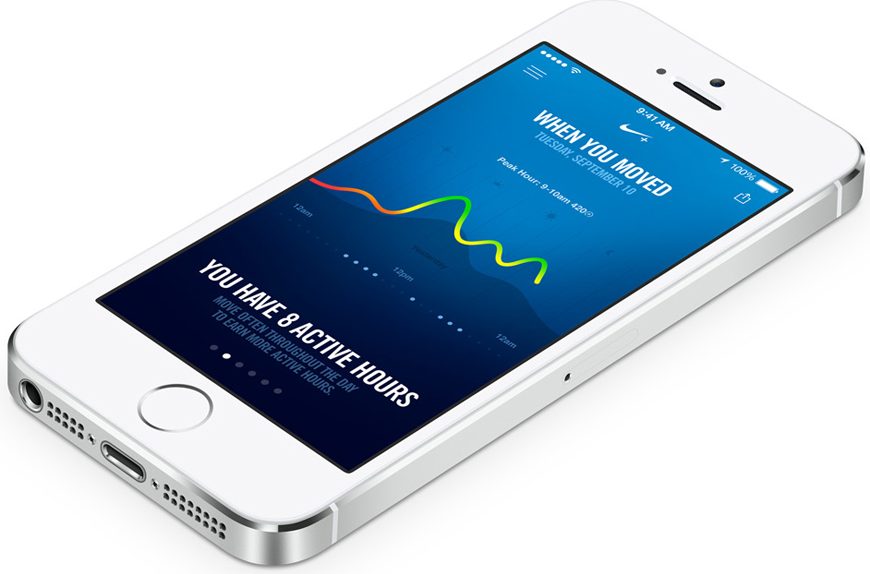Apple looks like it’s about to get a lot of company in the market for smartphones equipped with fingerprint scanners. IHS has released new research this week projecting that the market for mobile fingerprint scanners is set to grow by more than 11-fold over the next four years. In all IHS expects that 45.7 million scanner-enabled smartphones will ship this year, a number that will explode to 525 million smartphones in 2017.
IHS says that while there have been fingerprint scanners in mobile phones before, Apple has paved the way for mass fingerprint scanner adoption by creating “a sensor that eliminates the need for a swipe and that can also be elegantly integrated into the iPhone’s home button.” The firm notes that after the iPhone 5s, smartphones such as the HTC One Max and the Pantech Vega Secret Note are also expected to ship in the coming months. Based on its research, IHS also expects that top Apple rival Samsung will roll out its own fingerprint scanner-enabled smartphone sometime next year.
IHS’s press release follows below.
Apple Spurs Massive Growth in Smartphone Fingerprint Sensor Market
El Segundo, Calif. (Nov. 4, 2013)—As it has done so often before, Apple Inc. is triggering a new technology boom, with its integration of a fingerprint sensor on the iPhone 5s inspiring a wave of imitators that will drive the market for fingerprint-enabled smartphones to soar in the coming years.
A total of 525 million smartphones with integrated fingerprint sensors will ship in 2017, up from 45.7 million this year, according to the MEMS and Sensors Service at IHS Inc. (NYSE: IHS). Shipments this year will surge by a factor of 10 from a volume of 4.5 million in 2012, as presented in the attached figure.
“Fingerprint scanning for security, authentication and other purposes has always been a conceptually attractive solution in smartphones,” said Marwan Boustany, senior analyst, MEMS and Sensors, for IHS. “However, cost, size, performance and reliability issues have prevented fingerprint sensors from attaining widespread adoption. With the introduction of the iPhone 5s, Apple has overcome these challenges and has offered a fingerprint sensor solution that delivers seamless functionality. Now that Apple has shown the way, competitors are in a race to enter the market with similar systems, propelling rapid growth in the coming years.”
A one-of-a-kind market
Cellphone makers long have recognized the security risks associated with smartphones. Owing to the ubiquity of smartphones in daily life, they now contain a great deal of sensitive data in a form factor that is easy to steal. Users likewise are employing them for more and more activities over time, which means that more personal data is being stored on the devices.
Fingerprint sensors have been used in handsets as far back as 2000, first employed in a cellphone sold by Sagem. Other cellphone brands that offered fingerprint sensors include Fujitsu, Pantech, LG and Motorola.
Early implementations of fingerprint sensors often weren’t reliable, with dead skin interfering with accuracy. These sensors also required users to swipe their fingers, and often failed if the swipes were too swift or at the wrong angle. This was an issue across both laptops and handsets.
Apple’s fingerprints are all over this technology
However, Apple moved to solve these problems with the acquisition of AuthenTec in 2012. AuthenTec’s technology forms the basis of the seamless implementation of fingerprinting by the 5s, yielding a sensor that eliminates the need for a swipe and that can also be elegantly integrated into the iPhone’s home button. With the horsepower from the 64-bit applications processor of the 5s, the performance of the phone’s fingerprint sensor is very fast.
Everyone’s got their own fingerprint
The arrival of the 5s is triggering a wave of new fingerprint-enabled smartphones that follow Apple’s design lead. This is a familiar pattern in the smartphone and tablet markets, where Apple has spurred major market growth for technologies including touch screens, motion sensors and microelectromechanical system (MEMS) microphones.
New fingerprint-enabled phones at present include HTC’s One Max, the Konka k5 Van Gogh and the Pantech Vega Secret Note.
IHS expects leading smartphone brand Samsung to roll out fingerprint-enabled smartphones in 2014. Together with Apple, Samsung is likely to drive most of the volume in the smartphone market, leading to the half-billion unit shipments forecast in 2017.
Fingerprint technology will be initially limited to high-end smartphones before migrating to the mid-end. This will likely remain the case until the close of the forecast due to cost issues, IHS predicts.
“The increasing awareness of security and the high value of data in handsets—combined with the convenience of solutions and the ‘me-too’ effect among OEMs—will serve to promote the usage of fingerprint sensors in handsets, along with other biometric technologies,” Boustany said.
Checking for fingerprints
Smartphone brands now are working with a currently small group of fingerprint technology suppliers to develop their own solutions.
These suppliers include Validity Inc., which was bought by Synaptics in 2013; IDEX; and Fingerprint Cards AB. Fingerprint Cards already has design wins in handsets from Pantech and Konka, and is also working with optical and biometric trackpad supplier CrucialTec.






